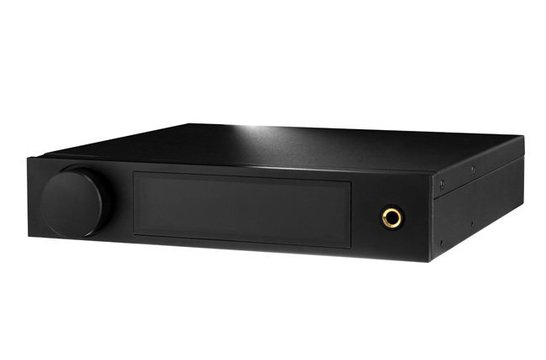





- We ship to United States of America
- Ordered now, shipped today
- At least two years warranty
- 45-day cooling-off period to return
-
Customer rating:


















Introducing: the SHD Studio (“Streaming High Definition”) digital audio processor incorporating Dirac Live®, the world’s premier room correction solution! While physically the SHD Studio is the “baby brother” of the full-featured SHD — accomplished by removing the analog I/O connectors and circuitry — internally it packs the same powerful audio processing capabilities.
The miniDSP SHD Studio is an all in One Streaming processor with Dirac Live® Digital Room Correction, Volumio Network streamer, All Digital interface (AES-EBU/SPDIF/TOSLINK/USB), 450MHz Sharc DSP processor, Headphone amplifier and DSP toolbox for subwoofer or multiway speaker.
We supply the miniDSP SHD Studio with a coupon (worth €9,50) for one free miniDSP plugin download.
miniDSP SHD Studio All in One Streaming Processor
miniDSP has included network streaming over Ethernet, using a dedicated quad-core ARM processor. Out of the gate, the miniDSP SHD Studio comes with Volumio, a popular open-source network streamer. Volumio gives you access to music files from sources as diverse as a USB stick, to files stored on your local network, to Internet Radio and Spotify.
The SHD Studio includes a suite of our powerful but user-friendly DSP audio tuning software - ten-band parametric EQ per channel, crossovers up to 48 dB/octave, compressor/limiter, and a 2x4 matrix mixer. Applications range from integrating a single subwoofer to a two-way active speaker. Outputs 3 and 4 also drive the headphone jack on the front panel for a uniquely flexible digital processing solution.
The miniDSP SHD Series processors are certified Roon Ready players. This means that they are certified by Roon Labs to work seamlessly with the Roon software running on your PC, Mac, or Linux-based server! Roon streaming technology stands for an incredible user interface, simple setup, rock-solid daily reliability, and the highest levels of audio performance, without compromise.
Note: To use Roon, you will need to have a paid account with Roon Labs. Your miniDSP SHD Series includes a free two-month trial.
Note: This product comes with a coupon (€9,50) for one free miniDSP plugin download.
Note: The Dirac Live Calibration Tools for miniDSP software is only compatible with the UMIK-1 microphone for measurement.
The UMIK-1/2 are measurement microphones approved by Dirac Research. Knowing the major effect a wrong calibration/measurement would have on the final results of Dirac Live tuning, we strongly recommend that you select a UMIK-1/2 microphone together with your platform for a plug&play experience leading to best results. Any issues related to 3rd party microphones such as ASIO/USB audio driver incompatibility/Latency problems or incorrect calibration process will not be under our support structure by our support team.
The best way is to connect a second DAC to the OUT3&4 digital output on the SHD Studio.
Usually, this is caused by over-boosting. Remember that all EQ requires additional headroom. In the case of Dirac Live, it will boost by up to 10 dB, so if you run your SHD at 0 dB volume with a digital input (e.g. in the case where you control volume in the amplifier instead of in the SHD), then you will certainly get a clipping of the output signal. If you experience distortion, reduce the level in the SHD to less than -10, and increase the gain on the amplifier accordingly.
Show more
Show more